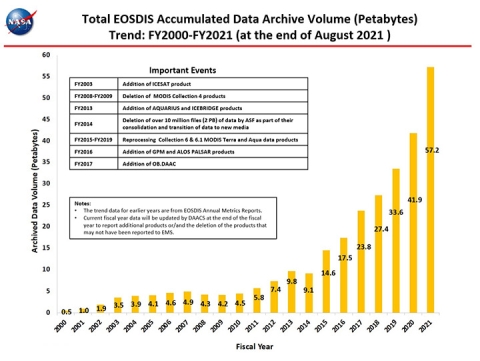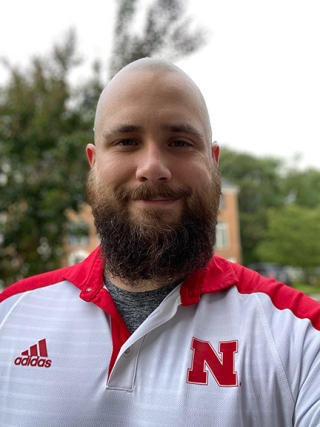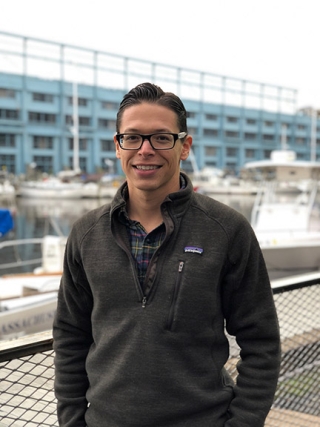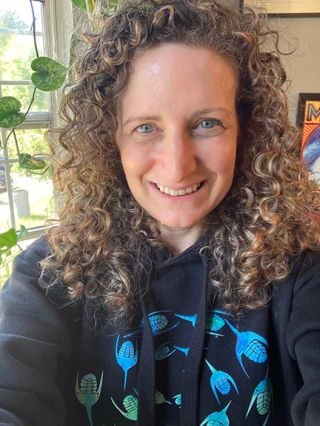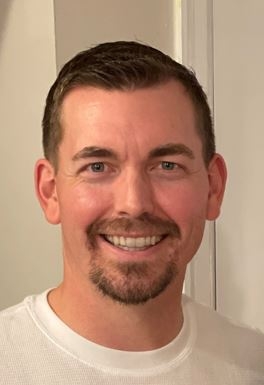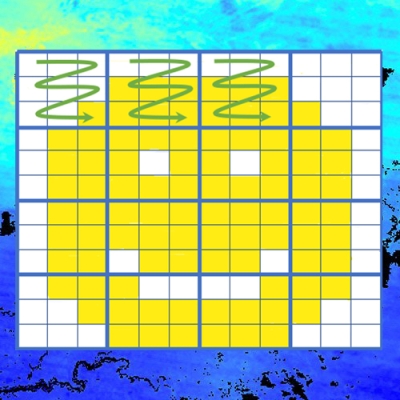From Aqua to Terra and every mission in between, NASA’s array of Earth-observing instruments and satellites produce a steady downpour of data that needs to be ingested, indexed, processed, archived, and distributed to scientists around the globe. At NASA's Goddard Space Flight Center, located in Greenbelt, Maryland, the task of controlling this data deluge is the purview of NASA's Earth Science Data and Information System (ESDIS) Project.
ESDIS manages the science systems of NASA's Earth Observing System Data and Information System (EOSDIS), which is responsible for housing one of the biggest collections of Earth observation data in the world. The current (as of August 2021) volume of data in EOSDIS collections is approximately 57 petabytes (PB). To put that in perspective, one PB of storage is equivalent to approximately 1.5 million CDROM discs. If that sounds like a lot, it's less than 25 percent of the 247 PB of data EOSDIS expects to have by 2025.
As you might expect, it takes a large staff to handle the tasks associated with managing all that data. Among the newest people to ESDIS to help accomplish those tasks are Nicholas Doty, Jay Herford, Vincent Inverso, and Sara Lubkin. All were hired within the past eight months and, although they work on different aspects for the ESDIS Project, they all work to ensure that EOSDIS can meet users’ needs and provide them with the Earth observation data they need.
As in many other workplaces across the country, most of NASA’s staff has been working virtually, which means these four new members of the ESDIS team haven’t spent any time in person with their new supervisors or colleagues. Like so many new employees, they are receiving virtual training on Goddard policies and procedures, the scope of ESDIS work, NASA Earth science data, tools, and resources. Still working from home, the ESDIS Project staff communicate through Microsoft Teams and other digital collaboration tools, PowerPoint presentations, documents, and other means.
Fortunately, Doty, Herford, Inverso, and Lubkin have all persevered. And while each has had to learn the proverbial ropes of his or her position in less-than-ideal circumstances, they have all found ways to contribute to the ESDIS mission.
Nicholas Doty, Development and Sustaining Engineer in the Science Systems Development Office, joined the ESDIS Project in April. Although he is new to NASA, his background in software engineering and experience working with large datasets, has prepared him well for his work with ESDIS.
Currently, Doty splits his time between working with the Ingest and Archive Train, which focuses on data ingest and archiving in the cloud, and assisting EOSDIS System Architect Dr. Christopher Lynnes with improving the analysis-in-place user experience, which involves transforming data into a form optimized for analysis in the cloud.
Ensuring these data get to the users who need them is the goal of both focus areas.
“My work is centered around improving the user experience — finding pain points in the use of our data and removing or minimizing them so [the data] are easier to get,” he said. “I also try to improve and simplify the analysis in place process, so more users can do their own data analysis.”
Computer Engineer Vincent Inverso was not new to NASA before joining ESDIS full time. Prior to getting hired in February, he spent two months as an ESDIS Project Intern, where he learned how to apply his computer science skills in the service of the ESDIS mission.
Previously, Inverso worked as a full-stack software engineer at a few small start-ups. In this role, he learned three important lessons that he carried with him to NASA.
“One, when building a product, put yourself in the mindset of the user as much as possible,” Inverso said. “Two, when possible, perform small low-cost experiments to test your assumptions. And three, no task is too small. Everything you do has immediate impact.”
These lessons serve him well at ESDIS, where he works on the Harmony cloud data services system and the Usage-Based Discovery projects, two initiatives that prioritize the needs of data users.
Currently, each Distributed Active Archive Center (DAAC) has its own archive, and they tend to have specific data transformation services associated with it. As EOSDIS data collections move into the cloud, every DAAC will essentially be sharing the same virtual archive and all the data will be managed using the same system software.
Harmony is designed to be a single data transformation framework that allows each DAAC to put its specific data transformation system components into the cloud. This would facilitate cross-DAAC data access, allow users to request only the data they want (and in their desired format and projection), provide access to analysis-ready data in the cloud, and allow users to share resources, which reduces the barriers for re-using code and sharing domain knowledge. The Usage Based Discovery project seeks to develop a tool to help users navigate NASA datasets based on how they have been used in applications and research articles.
“With the Harmony project we’re making it easier for scientists to access and use analysis-ready data in the cloud, without having to be expert computer scientists,” Inverso said. “The Usage-Based Discovery project allows users to find datasets based on how they are used in research articles or applications. Both initiatives have an important role to play in furthering open science and data discovery.”
Sara Lubkin also had prior experience with NASA before coming to ESDIS in February. Although new to the ESDIS Science Operations Office, Lubkin first became acquainted with NASA as a participant in NASA’s DEVELOP Program, which works to address environmental and public policy issues through interdisciplinary research projects using NASA Earth observations. Afterward, she worked as DEVELOP’s assistant center lead and project coordination fellow at Goddard and then as an Earth Science Data System (ESDS) support scientist at NASA Headquarters.
In her current role as DAAC Engineer for NASA’s Physical Oceanography DAAC (PO.DAAC) at ESDIS, Lubkin serves as the ESDIS contact for PO.DAAC and helps the DAAC’s staff address any problems or issues that might arise. She wears “a lot of other hats” as well, she says.
“With the help of Chris Lynnes, I serve as the ESDIS liaison for the Interagency Implementation and Advanced Concepts Team (IMPACT) Program and manage the ESDIS Standards Coordination Office(ESCO),” Lubkin said. “I also work with the DAACs to facilitate the archival of airborne data and I help the ESDS Advancing Collaborative Connections for Earth System Science (ACCESS) Program infuse its technologies into ESDIS.”
Yet, no matter which of the various hats she’s wearing at any given moment, they all ultimately serve the same purpose.
“It all fits right in with making it easier for DAAC users to obtain, manage, and use NASA Earth science data,” she said.
Jay Herford, an information technology specialist focused on cybersecurity who joined ESDIS in January, works to ensure users can access NASA Earth science data too—by keeping ESDIS’s information system up and running and keeping unwanted cyber threats out.
“Currently, I work to maintain and develop ESDIS’s System Security Plans and manage its Incident Response process,” says Herford. “System Security Plans are complex and require constant updates. For example, our team is responsible for maintaining and documenting contingency plan testing, security control review and implementation details, boundary diagrams, and inventory lists, just to name a few.”
Herford’s academic and work experiences have prepared him for this task. He studied software development in college and worked as a contractor in the Cybersecurity Services and Integration Division of NASA's Office of the Chief Information Officer and then the Software Engineering Division at Goddard.
“My background makes me uniquely suited to assist ESDIS with managing System Security Plans from a compliance perspective and, eventually, for becoming more involved with planning security architecture,” he said.
At the most basic level, Herford’s work contributes to the ESDIS mission by keeping its information system secure.
“My work will help ensure that ESDIS continues to maintain its Authorization to Operate,” said Herford. (Authorization to Operate is an industry term meaning a system has met and passed all the requirements for operation.) “Longer-term, I hope to help facilitate positive working relationships with our tenants and subsystems, which will hopefully allow security to be viewed as a trusted partner, not a hindrance.”
Taken together, the work of Doty, Inverso, Lubkin, and Herford is integral to ESDIS ongoing efforts to ensure scientists and the public have access to Earth-observation data and promote the interdisciplinary use of EOSDIS data to a broad range of user communities. And, as ESDIS progresses with moving more and more of EOSDIS data collections into the cloud to help people take advantage of cloud computing’s benefits, their work will become even more significant.
